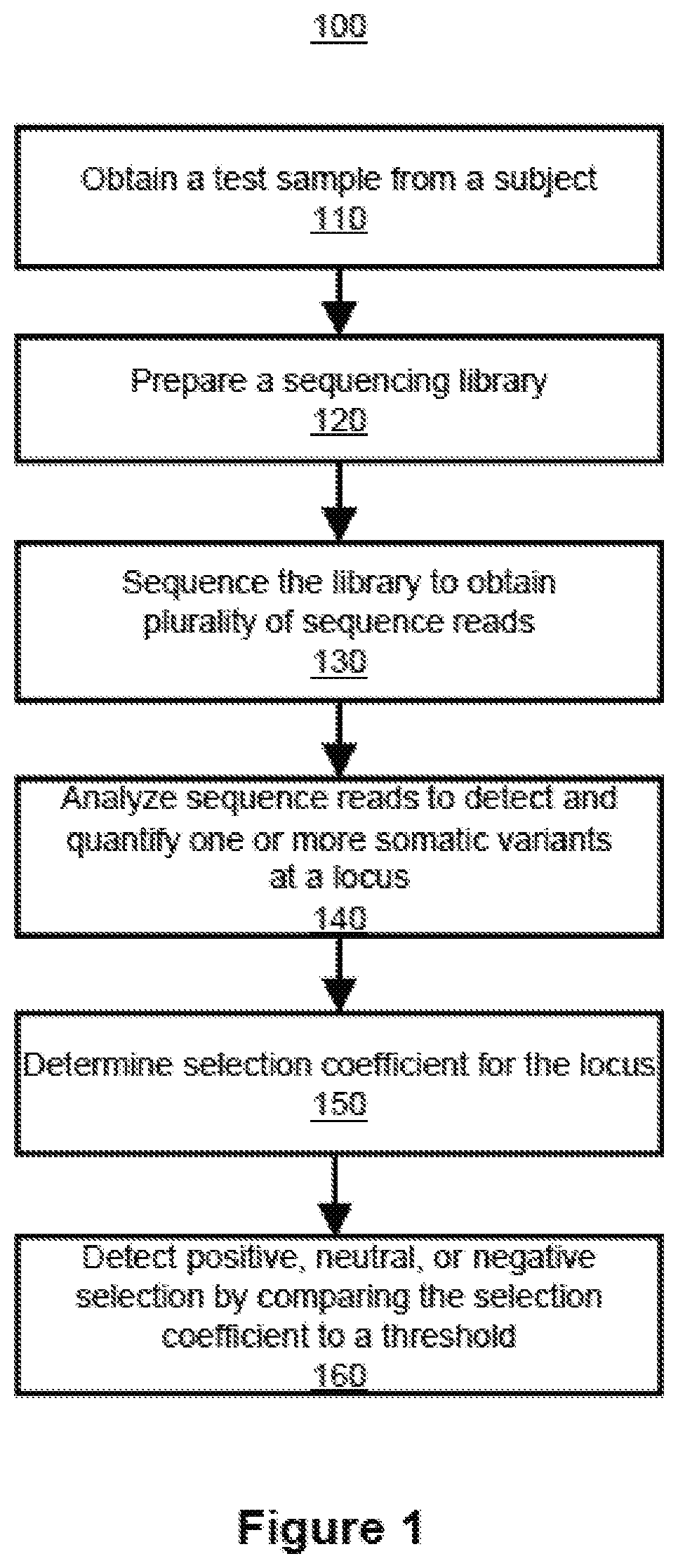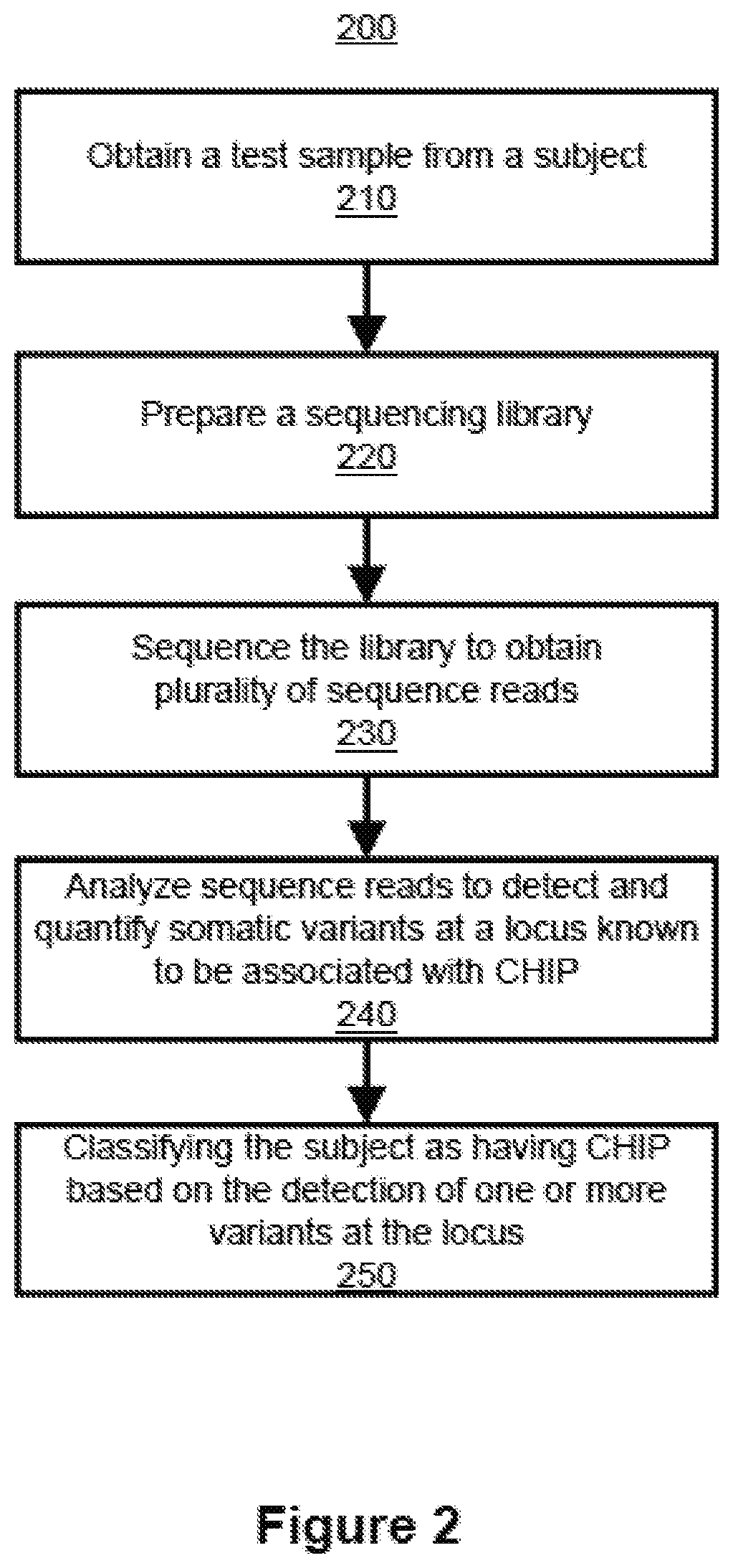Inferring selection in white blood cell matched cell-free DNA variants and/or in RNA variants
a technology of dna variants and white blood cells, applied in the field of assessing biological samples, can solve problems such as prone to accumulation of mutations
- Summary
- Abstract
- Description
- Claims
- Application Information
AI Technical Summary
Benefits of technology
Problems solved by technology
Method used
Image
Examples
example joint
VII. EXAMPLE JOINT MODEL
[0309]FIG. 20 is a flowchart of a method 2000 for using a joint model 1225 to process cell free nucleic acid (e.g., cfDNA) samples and genomic nucleic acid (e.g., gDNA) samples according to various embodiments. The joint model 1225 can be independent of positions of nucleic acids of cfDNA and gDNA. The method 2000 can be performed in conjunction with the methods 1800 and / or 1900 shown in FIGS. 18-19. For example, the methods 1800 and 1900 are performed to determine noise of nucleotide mutations with respect to cfDNA and gDNA samples of training data from health samples. FIG. 21 is a diagram of an application of a joint model according to one embodiment. Steps of the method 2000 are described below with reference to FIG. 21.
[0310]In step 2010, the sequence processor 1205 determines depths and ADs for the various positions of nucleic acids from the sequence reads obtained from a cfDNA sample of a subject. The cfDNA sample can be collected from a sample of blood...
example noise
VII. B. Example Noise of Joint Model
[0327]To account for noise in the estimated values of the true AF introduced by noise in the cfDNA and gDNA samples, the joint model 1225 can use other models of the processing system 1200 previously described with respect to FIGS. 14-19. In an example, the noise components shown in the above equations for P(ADcfDNA|depthcfDNA, AFcfDNA) and P(ADgDNA|depthgDNA, AFgDNA) are determined using Bayesian hierarchical models 1225, which may be specific to a candidate variant (e.g., SNV or indel). Moreover, the Bayesian hierarchical models 1225 can cover candidate variants over a range of specific positions of nucleotide mutations or indel lengths.
[0328]In one example, the joint model 1225 uses a function parameterized by cfDNA-specific parameters to determine a noise level for the true AF of cfDNA. The cfDNA-specific parameters can be derived using a Bayesian hierarchical model 1225 trained with a set of cfDNA samples, e.g., from healthy individuals. In a...
PUM
| Property | Measurement | Unit |
|---|---|---|
| Fraction | aaaaa | aaaaa |
| Fraction | aaaaa | aaaaa |
| Fraction | aaaaa | aaaaa |
Abstract
Description
Claims
Application Information
 Login to View More
Login to View More - R&D
- Intellectual Property
- Life Sciences
- Materials
- Tech Scout
- Unparalleled Data Quality
- Higher Quality Content
- 60% Fewer Hallucinations
Browse by: Latest US Patents, China's latest patents, Technical Efficacy Thesaurus, Application Domain, Technology Topic, Popular Technical Reports.
© 2025 PatSnap. All rights reserved.Legal|Privacy policy|Modern Slavery Act Transparency Statement|Sitemap|About US| Contact US: help@patsnap.com



